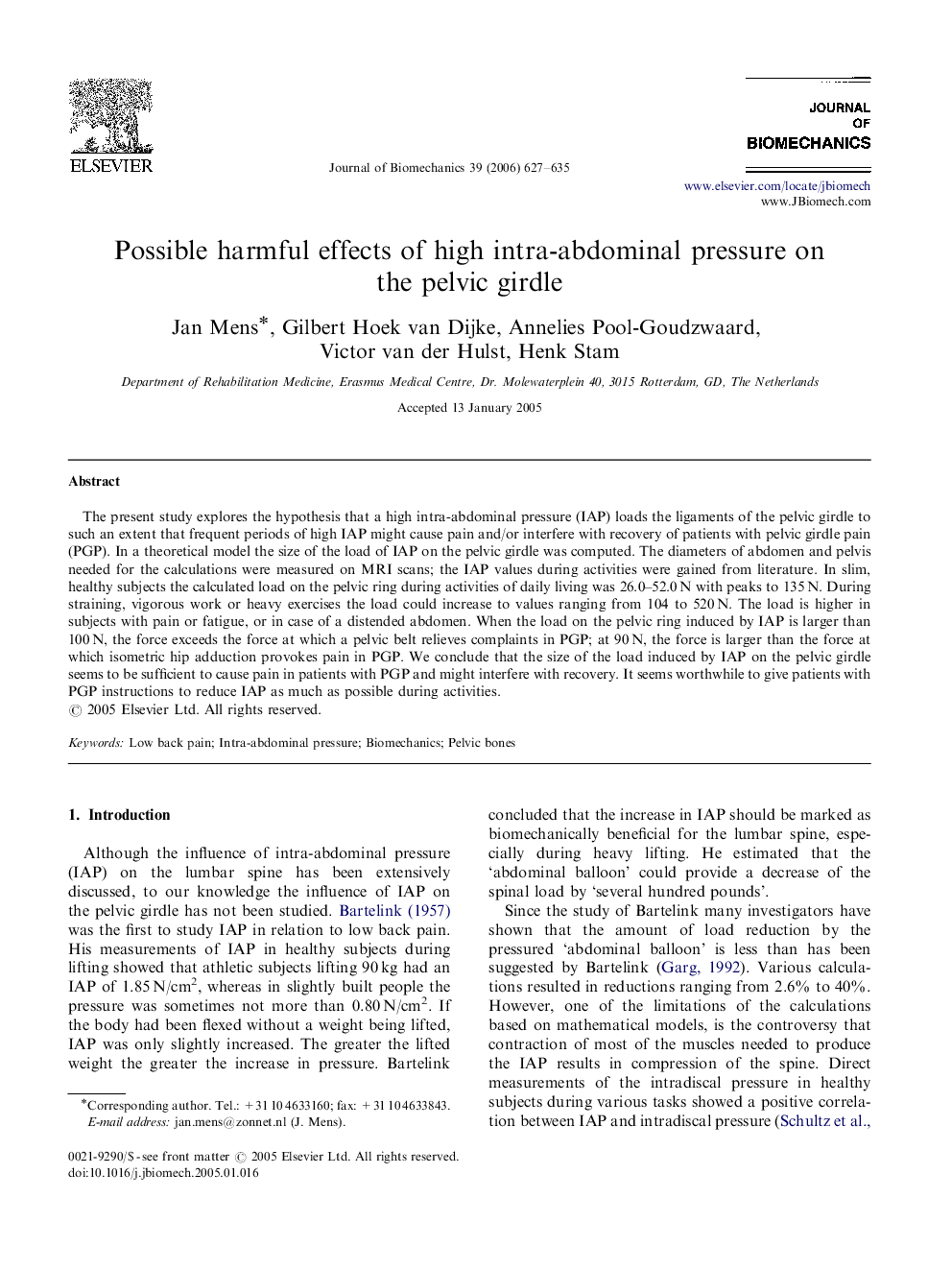| Article ID | Journal | Published Year | Pages | File Type |
|---|---|---|---|---|
| 875189 | Journal of Biomechanics | 2006 | 9 Pages |
The present study explores the hypothesis that a high intra-abdominal pressure (IAP) loads the ligaments of the pelvic girdle to such an extent that frequent periods of high IAP might cause pain and/or interfere with recovery of patients with pelvic girdle pain (PGP). In a theoretical model the size of the load of IAP on the pelvic girdle was computed. The diameters of abdomen and pelvis needed for the calculations were measured on MRI scans; the IAP values during activities were gained from literature. In slim, healthy subjects the calculated load on the pelvic ring during activities of daily living was 26.0–52.0 N with peaks to 135 N. During straining, vigorous work or heavy exercises the load could increase to values ranging from 104 to 520 N. The load is higher in subjects with pain or fatigue, or in case of a distended abdomen. When the load on the pelvic ring induced by IAP is larger than 100 N, the force exceeds the force at which a pelvic belt relieves complaints in PGP; at 90 N, the force is larger than the force at which isometric hip adduction provokes pain in PGP. We conclude that the size of the load induced by IAP on the pelvic girdle seems to be sufficient to cause pain in patients with PGP and might interfere with recovery. It seems worthwhile to give patients with PGP instructions to reduce IAP as much as possible during activities.
